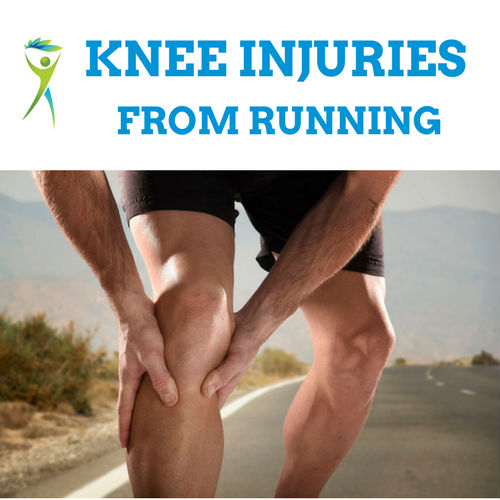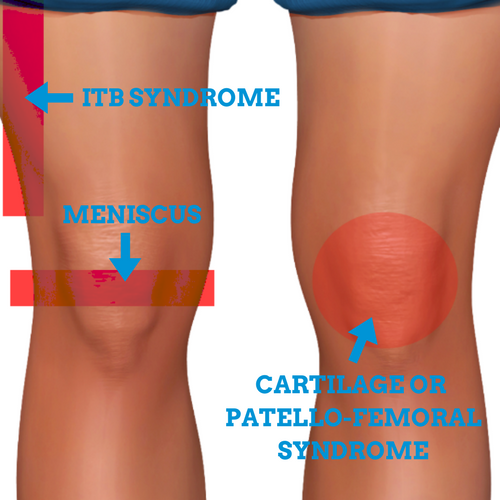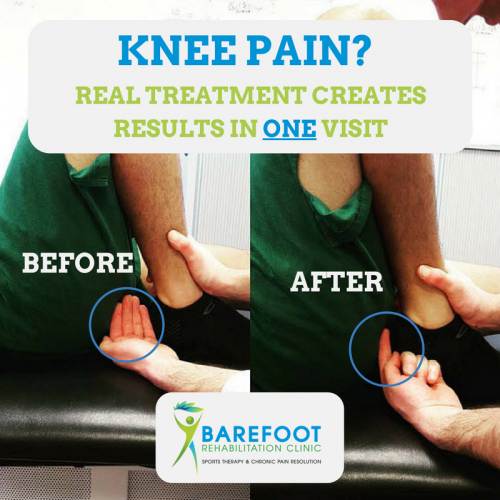
31 Jan Knee Injuries from Running
Knee injuries from running do not come out of thin air.
Once your knee is injured, your ankle, hip, and low back have already thrown in the towel.
I’ve already discussed the Most Common Running Injuries in every joint and how runners get themselves hurt by breaking a couple of core principles:
- The Only Healthy Fitness Activity Is One That Always Changes.
- The Plant Doesn’t Flower Until The Roots and Stem Are Strong Enough to Handle the Blossoming.
In that post, I give you simple flexibility tests you can do to see what your joint health is at and discuss the lunge as a strengthening “must” for runners.
Here, we will dive further into self-diagnosing your knee injuries so that you can learn what you could do about it.
The Top 5 Most Common Knee Injuries from Running & How You Can Start to Self-Diagnose
The top 5 most common knee injuries from running are:
- Osteoarthritis
- Meniscus pain
- Cartilage pain
- Iliotibial band (ITB) syndrome
- Patello-femoral syndrome
Below, I’ll discuss how you can help self-diagnose your knee condition by:
- Location: the site of your pain.
- Flexibility: how tight you are in specific range of motion (ROM) tests.
- Pain: when you’re pain is typically worse than normal.
While the data below is “probable” for the condition discussed, they’re not 100% specific. You cannot guarantee you have the condition without the help of a qualified musculoskeletal provider. If you really want a diagnosis, see a reputable doctor or therapist. I recommend checking Integrative Diagnosis’s Find a Provider section.
The red areas below indicate the location of each condition. Osteoarthritis is not labelled in the image because it can occur where the meniscus or cartilage/patello-femoral syndrome are located.

Here’s a brief 2 minute video where I outline and discuss pain location.
Osteoarthritis
Osteoarthritis is a degenerative process of the bone, usually involving degeneration of the muscles, cartilage and ligaments as well.
- Location: at meniscus or cartilage
- Flexibility: can limit ROM or not in the heel to butt test
- Pain: Usually gets better with exercise or warming up. Symptoms will start a few hours after exercise or the following day.
What You Should Know and Do: Bone and cartilage degeneration is not reversible. Sure, you should eat your fish to get your omega 3’s and can try injecting chicken cartilage into your knees. While these new technologies are very fancy, they far from help everyone. Even my very elitist attitude to getting individuals out of pain fails quite often when a joint is permanently damaged.
There is a fine line of activity that should be walked. Not too much exercise, not too little. You know you’re overdoing it when you’re in more pain post-work-out. You know you’re not doing enough activity when you’re losing the ability to squat and lunge well over months to years.
Meniscus Pain
The meniscus is the main cushion between your long thigh bone and your leg/shin bones. When damaged, bending your knee is like trying to close a door when you put a wallet in the door-hinge.
- Location: in the knee joint itself (see video for a better explanation in 3-D)
- Flexibility: usually limits ROM in the heel to butt test
- Pain: Occurs anytime the knee is bent, in the middle or at the end of activity, or going up/down stairs
What You Should Know and Do: Meniscus damage, when bad enough, warrants an orthopedic consult and potential surgery. The good thing is, this type of surgery is fairly non-invasive and works well to reduce the size of the problem. You should not expect to have a 100% healthy knee like you were at 15 years of age, despite how godly any surgeon feels.
Cartilage Pain
The cartilage is the cushion between your patella and the end of your long femur bone. If it’s painful, not only is it inflamed, but it’s probably frayed or torn. As of this writing, there is no gold-standard treatment for regenerating cartilage once lost. I’ve heard of a handful of people who claim that they’ve regenerated cartilage as diagnosed by MR imaging, before and after. With time, perhaps technology will be able to increase the success rate of people who undergo these interventions.
- Location: behind the patella (see video for a better explanation in 3-D)
- Flexibility: usually limits ROM in the heel to butt test while inflamed but you can gain the ROM back after inflammation dies down
- Pain: Occurs anytime the knee is bent
What You Should Know and Do: As mentioned above under the osteoarthritis section, once cartilage is torn, frayed, or gone, there’s no getting it back. Even more so than bony degeneration, someone with cartilage degeneration has to be hyper-sensitive to not doing too much exercise. As cartilage wears, the speed at which it degenerates begins to take an exponentially increasing path.
ITB Syndrome
The IT Band is a secondary stabilizer of the knee, behind the hamstring. When the hamstring is under-working, the IT Band will work overtime to compensate.
- Location: along the IT Band
- Flexibility: does not have to limit ROM in the heel to butt test, although another issue in the knee could. Most often, the hamstring stretch test is limited.
- Pain: Occurs in the middle or at the end of activity.
What You Should Know and Do: This is one condition that is completely reversible. More important than treating the IT Band and lateral quad directly is restoring hamstring flexibility, then strength. This can be done directly by removing adhesion (glue in the muscles) from the low back, sciatic nerve at hip external rotators, sciatic nerve at hamstrings, adductor magnus, posterior hip capsule, or the hamstring direclty.
Any strengthening that occurs before the hamstring stretch test is restored to its highest ceiling (potential for flexibility increase) is putting the cart before the horse and can lead to greater injury down the road. Like we all learned in math class as kids, the order of operations dictates that you multiple before you add.
Patello-femoral Syndrome
When the patella is not moving in it’s groove appropriately, it starts grinding on the bones nearby. Imagine two gears clunking by as they spin within a watch or another machine. This is what occurs when you’re joints aren’t moving smoothly.
- Location: behind the patella
- Flexibility: does not have to limit ROM in the heel to butt test, although another issue in the knee could.
- Pain: Occurs in the middle or at the end of activity.
What You Should Know and Do: The patella is most often pulled out of its groove by the lateral quad and IT Band, overworking. This is a similar pathophysiology as ITB Syndrome. But a different part breaks first (the surface under the patella and not the ITB).
Similar to ITB Syndrome, hamstring integrity must be restored and then treatment can resume to whichever tissue is pulling the patella in order to have progress that is permanent and productive.
Remove All Revelant Adhesion
You should, for all of the knee injuries from running above, and any other musculoskeletal condition, is restore range of motion to all revelant body parts to your pain and injury.
**KEY FOR RUNNERS: Ankle dorsiflexion is one of the biggest restrictions. Take two minutse and test yourself at home. All you need is a ruler and a wall.
If stretching were working, everyone would be as flexible as a 13 year-old female yogi who can touch her elbows to the floor with straight knees.
Since stretching isn’t working, you can get more flexible by finding a reputable doctor or therapist to remove the adhesion. If you don’t know what adhesion is, it’s like glue within and between your muscles. It makes you tight and weak.

When you get the right treatment, you can expect results like below with the heel to butt test. Notice the person’s heel “before” stopped at 4 fingers from his butt cheek, then at 1 finger from his butt cheek “after.”

Someone who knows what they’re feeling can tell you whether your joint range of motion is being stopped by the joint itself (and isn’t fixable) or tension in the muscles (caused by adhesion and is fixable).When patients in California or Washington communicate with us in NJ/NY about who they should see, the first place we look is Integrative Diagnosis’s Find a Provider application.
 Do you have any knee injuries from running? Have you been able to get rid of it with standard means such as stretching, foam rolling, or conventional physical therapy? Please share in the comments below.
Do you have any knee injuries from running? Have you been able to get rid of it with standard means such as stretching, foam rolling, or conventional physical therapy? Please share in the comments below.

No Comments